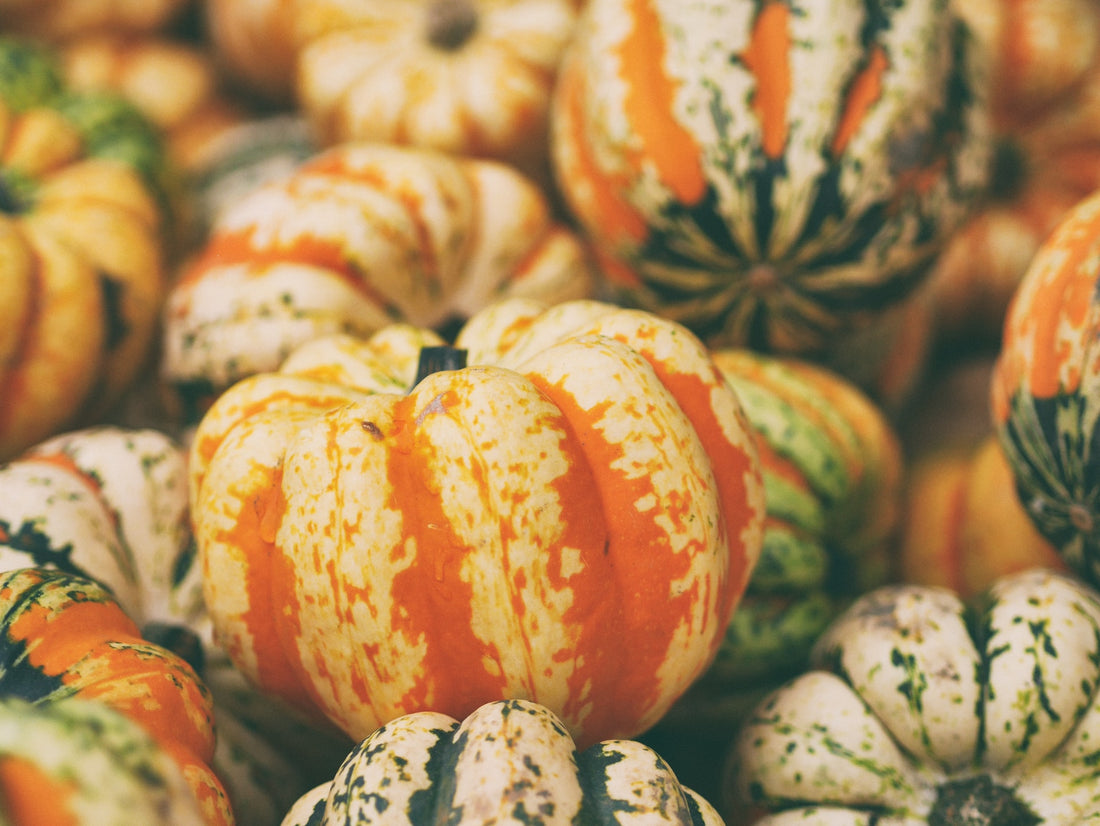The end of summer brings bountiful harvests of winter squash; it's one of the best times to be a gardener! Winter squash can be stored long-term or used in many types of recipes, from soups to stir-fries to desserts (yes, desserts!). This is a versatile vegetable type, which goes perfectly with the numerous winter squash varieties.
Winter squash grows easily once planted and thrives with very little care. The plants just need regular water, sunlight, and space to grow to their full potential. Oh, and also regular checking to keep some of those pesky bugs away.
Some of our favorite types of winter squash are:
Curing Winter Squash
If you would like to keep your squash throughout the winter, it's completely possible with some simple (but very necessary) storage tips. This method stores the squash whole, allowing the natural thick skin to provide protection for long-term storage. [note: Acorn squash should not be cured as it lessens the shelf life for this variety.]
- Wipe excess dirt of the squashes but don't scrub them clean. A little bit of dirt provides a natural barrier.
- Only cure unblemished squash fruits -- any cuts, openings, or soft spots will allow bacteria in and accelerate decay.
- Place the squash in a warm location for 10-15 days. This evaporates excess moisture, which increases shelf life. Ideal temperature range is between 80-85F but that's not absolutely necessary. If unsure, leave them out to cure longer.
- Make sure the location is protected from the elements and pests. The squash doesn't need to be out in the sun, just in a warm environment. A place on the porch or deck is sufficient, as is any indoors space.
- Store in a cool, dark location like a basement or cellar. The ideal storage temperature is between 50-55F.
- Arrange the squash in a single layer with space between each one to get better airflow, which is necessary to prevent rotting.
- Check the squash weekly throughout the winter to catch any that may develop rot or signs of weakness. Remove these immediately so they don't infect the others and make the whole harvest rot.
- Checking weekly is a great way to make sure you incorporate and use the squash!
Freezing Winter Squash
Winter squash freezes extremely well. You don't even have to cook it first; you can just cut it up and put it in the freezer. If you like, you can cook it beforehand and store it as cubes or as a puree. Frozen pureed squash is an excellent shortcut to have on hand for a super-fast squash soup or casserole.
- Freezing squash cubes -- Peel and cut the squash into chunks or cubes. Lay them on a baking sheet and put them in the freezer. This allows each piece to freeze separately. After the squash pieces are frozen, remove them to a plastic bag or airtight container. Make sure you label and date the storage container, then put it in the freezer.
- Freezing squash puree -- Peel and cut the squash into cubes. Cook it until it is soft. Puree well and then pour it into a plastic bag or airtight storage container. Label and date the storage unit and freeze it.
Canning Winter Squash
Winter squash can also be canned. However, it is only safe to do cubes, not puree. Follow the instructions from the Canning Diva to learn how to can squash safely and easily.
Make Something Delicious
Use any blemished or less-than-perfect specimens as soon as you can. There are so many incredible recipes; here are a few of our favorites:
- Winter Squash and spinach pasta bake
- Winter Squash mac and cheese
- 5-ingredient Butternut Squash fritters
- White Bean soup with winter squash and kale
- Winter squash gratin
- Quinoa salad with roasted squash, caramelized onions and wilted spinach
- Butternut squash bread
- Winter squash pie
If you'd like to fill your garden with winter squash next year, browse our numerous seed offerings.



